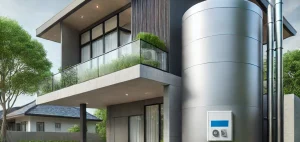
Understanding Concrete Damage: Causes and Indicators
Concrete, renowned for its durability, is not impervious to damage. Over time, factors such as weather fluctuations, moisture infiltration, and structural stress can lead to cracks, spalling, and surface degradation. Recognizing early signs—like hairline fractures, uneven surfaces, or discoloration—is crucial for timely intervention.
DIY Concrete Repair: Tackling Minor Issues
For homeowners inclined towards hands-on solutions, addressing minor concrete issues can be both cost-effective and satisfying. Here’s how to approach common DIY repairs:
Hairline Cracks
These superficial cracks, often less than 1/4 inch wide, can be sealed using concrete caulk or liquid fillers. Ensure the area is clean and dry before application. :contentReference[oaicite:0]{index=0}
Surface Spalling
Spalling, characterized by flaking or chipping, can be remedied with resurfacing compounds. After cleaning the area, apply a concrete resurfacer to restore a smooth finish. :contentReference[oaicite:1]{index=1}
Edge and Corner Repairs
Damaged edges or corners require patching compounds. Using a form to shape the repair area can help achieve a clean finish. :contentReference[oaicite:2]{index=2}
Essential Tools and Safety
Equip yourself with safety glasses, gloves, a wire brush, trowel, and appropriate repair materials. Always follow manufacturer guidelines and prioritize safety during repairs.
When to Call the Professionals: Addressing Major Concerns
While DIY methods are suitable for minor issues, certain situations necessitate professional expertise:
Structural Cracks
Cracks wider than 1/4 inch or those that are deep may indicate structural problems. Professionals can assess the severity and implement appropriate solutions. :contentReference[oaicite:3]{index=3}
Foundation Issues
Signs like uneven floors, sticking doors, or water seepage suggest foundation problems. Companies like EC Foundations specialize in diagnosing and repairing such issues, ensuring the structural integrity of your home.
Extensive Surface Damage
Large areas of damage, such as widespread spalling or sinking slabs, often require specialized equipment and techniques beyond the scope of DIY repairs.
Choosing the Right Approach: DIY vs. Professional Repair
Deciding between DIY and professional repair depends on the extent of damage, available tools, and personal expertise. While minor cracks and surface imperfections can be managed independently, structural concerns and extensive damage warrant professional intervention to ensure safety and longevity.
Preventative Measures: Extending the Life of Your Concrete
Regular maintenance can prevent many common concrete issues:
- Seal concrete surfaces every few years to protect against moisture and wear.
- Ensure proper drainage around concrete areas to prevent water accumulation.
- Address minor cracks promptly to prevent them from expanding.
Final Thoughts: Ensuring Durable and Safe Concrete Structures
Concrete repair is a balance between timely intervention and appropriate methods. While DIY repairs are suitable for minor issues, recognizing when to seek professional help is essential for maintaining the safety and durability of your structures. For residents in Ottawa facing foundation concerns, ECFoundations offers expert solutions tailored to your needs.





